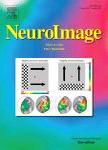版权所有:内蒙古大学图书馆 技术提供:维普资讯• 智图
内蒙古自治区呼和浩特市赛罕区大学西街235号 邮编: 010021

作者机构:Columbia Univ Dept Psychiat Mol Imaging & Neuropathol Div 1051 Riverside Dr New York NY 10032 USA New York State Psychiat Inst & Hosp Dept Mol Imaging & Neuropathol New York NY 10032 USA Columbia Univ Dept Biostat New York NY USA
出 版 物:《NEUROIMAGE》 (神经图像)
年 卷 期:2017年第146卷
页 面:121-131页
核心收录:
学科分类:1002[医学-临床医学] 1001[医学-基础医学(可授医学、理学学位)] 1010[医学-医学技术(可授医学、理学学位)] 1009[医学-特种医学] 10[医学]
主 题:BRAIN tomography SEROTONIN BLOOD sampling COMPUTER algorithms AMPLITUDE estimation
摘 要:Binding potential (BPND) is a commonly used PET outcome measure because it can be estimated without blood sampling if a brain reference region (RR) devoid of the target of interest exists. For many radioligands however no RR exists and the total distribution volume (V-T) whose estimation requires arterial blood sampling is normally considered as the outcome measure. Here we present a method that allows calculation of BPND without requiring either blood samples or a RR. The method extends our previous algorithm for estimating non-displaceable distribution volumes (V-ND) without using a RR. Here we show that if a template input function with arbitrary amplitude but a shape similar to the actual arterial input function is used in the algorithm estimation of V-T and V-ND are both proportionally biased and thus this bias cancels out in the estimation of BPND. The method is evaluated using simulated data human data acquired with the serotonin 1A receptor radioligand [C-11]WAY-100635 and blocking data acquired in baboons using the serotonin 1A receptor radioligand [C-11]CUMI-101. We evaluated two versions of template input functions: an arbitrarily downscaled version of the actual arterial input function and an unsealed population-based input function. In addition we evaluated how shape modifications of the template input function impact the estimates of BPND. With the downscaled input function BPND values close to the gold standard were obtained. When the unsealed population-based based input function was used greater variability was observed but no discernable bias was introduced. When the input function shape was modified a systematic but small bias in BPND was introduced. We conclude that provided the shape of the arterial input function is adequately described determination of its amplitude is not necessary for estimation of BPND.